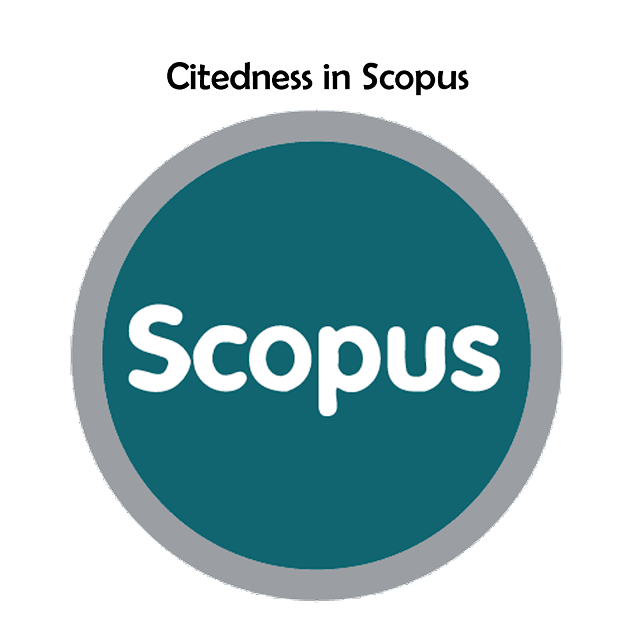Application of the Fuzzy C-Means Method in Grouping Heart Abnormalities Based on Electrocardiogram Medical Records
Sumiati Sumiati(1*); Suherman Suherman(2); Raden Muhamad Firzatullah(3); Agung Triayudi(4); Agung Rahmad Fadjar(5);
(1) Universitas Serang Raya
(2) Universitas Serang Raya
(3) Politeknik Transportasi Sungai Danau dan Penyeberangan
(4) Universitas Nasional
(5) Universitas Serang Raya
(*) Corresponding Author
AbstractHeart disease is the main cause of death which can be diagnosed using an electrocardiogram. This study aims to classify heart defects using the Fuzzy C Means technique. The advantage of using Fuzzy C Means is that it is unsupervised and can reach a convergent cluster center under certain conditions. It is a clustering model that has the value of the objective function, number of iterations and completed time. In an unsupervised learning, the focus is more on exploring data such as looking for patterns in the data. Clustering itself aims to identify patterns of similar data to be grouped. It can be a solution to overcome the process of determining the risk of heart disease. The results showed that there were 10 data grouped into cluster 1 and 10 data into cluster 2. The first group (Cluster 1) consisted of patients with serial numbers 3,5,8,9,11,12,16,17,19,20, while the second group (Cluster 2) consisted of patients with serial numbers 1,2,4,6,7,10,13,14,15 and 18. Accuracy testing results in a success rate of 60%. KeywordsElectrocardiogram; Clustering; Diagnosis; Fuzzy C-Means; Heart Disease
|
Full Text:PDF |
Article MetricsAbstract view: 521 timesPDF view: 245 times |
Digital Object Identifier https://doi.org/10.33096/ilkom.v15i1.1272.82-100 https://doi.org/10.33096/ilkom.v15i1.1272.82-100
|
Cite |
References
Lindow MD et al, “A Patient with non–ST-Segment Elevation Acute Coronary Syndrome: Is it possible to predict the culprit coronary artery,” PII: S0022-0736(16)30026-7 DOI doi:10.1016/j.jelectrocard.2016.05.001 Reference: YJELC 52232, 2016.
Varela et al, “Combining machine learning models for the automatic detection of ECG arousals, ” Journal Elsevier http://dx.doi.org/10.1016/j.neucom.2016.11.086 0925-2312/© 2017 Elsevier B.V. All rights reserved, 2017.
Al-Ani et al, “A Rule-Based system for Automated ECG Diagnosis, ”International Journal of Advances in Engineering & Technology, Sept 2013 IJAET ISSN 22311963, 2013.
Patel, J., Upadhyay, T., dan Patel, S, “Heart disease prediction using Machine Learning and Data Mining technique, ”Journal IJCSC, Vol. 7, No. 1, pp. 129 - 137, DOI : 10.090592/IJCSC.2016.018, 2015.
Abdar, M, “Using Decision Trees in data mining for predicting factors influencing of heart disease, ” Carpathian Journal of Electronic and Computer Engineering, Vol. 8, No. 2, pp. 31-36, 2016.
Raihan, M., Mondal, S., More, A., Boni, P.K., Sagor, M.O.F, “Smartphone based heart attackrisk prediction system with statistical analysis and data mining approaches, ” Advances in Science, Technology and Engineering Systems Journal, Vol. 2, No. 3, pp. 1815-1822, 2017.
Kulkarni, A.R., dan Mundhe, S.D, “Data mining technique: an implementation of association rule mining in healthcare, ” International Advanced Research Journal in Science, Engineering and Technology, Vol. 4, No. 7, pp. 62 - 65, DO: I10.17148/IARJSET.2017.4710, 2017.
. Singh, H., dan Kaswan, K.S, “Clinical decision support systems for heart disease using data mining approach, ” International Journal of Computer Science and Software Engineering (IJCSSE), Vol. 5, No. 2, pp. 19 – 23, 2016.
Sumiati,et al, “Certainty Cognitive Map (CCM) for assessing cognitive map causality using Cartainty Factors For Cardiac Failure, ” ICIC Express Letters . ICIC International @2021 ISSN 1881-803X pp 27-36 Volume 15, Number 1, 2021.
Adeli, A., and Neshat, M, “ A fuzzy expert system for heart disease diagnosis, ” Proceedings of the International MultiConference of Engineers and Computer Scientist 2010. Vol. I, Hongkong, Availablet at : http://www.iaeng.org/publication/IMECS2010/ IMECS2010_pp134-139.pdf, 2010.
.Shdefat, A.Y. et al, “Utilizing ECG waveform features as new biometric authentication method, ” International Journal Of Electrical and Computer Engineering (IJECE) Vol 8 No.2, 2018.
Sumiati, et al, “ Expert system for heart disease based on electrocardiogram data using certainty factor with multiple rule, ” IAES International Journal Of Artificial Intellegent (IJ-AI) . Vol 10.No 1, pp 43-50 ISSN: 2252-8938, DOI : 11591/ijai.v10.il.pp 43-50, 2021.
Abdar M, “ Using decision trees in data mining for predicting factors influencing of heart disease, ”Carpathian Journal of Electronic and Computer Engineering 8 No 2 pp 31-36, 2015.
Karthiga A S, Mary M S, and Yogasini M, “ Early prediction of heart disease using decision tree, ” Algorithm International Journal of Advanced Research in Basic Engineering Sciences and Technology (IJARBEST) 3 Issue 3 pp 1 – 17, 2017.
Joshi A, Dangra E J, and Rawat M K, “ A Decision Tree based classification technique for accurate heart disease classification & prediction, ”International Journal of Technology Research and Management 3 Issue 11 pp 1 – 4, 2016.
Aziz A, and Rehman A U, “ Detection of cardiac disease using data mining classification techniques, ” (IJACSA) International Journal of Advanced Computer Science and Applications 8 No7 pp 256 – 259, 2017.
Zriqat I M, Altamimi A M, and Azzeh M, “ A comparative study for predicting heart diseases using data mining classification methods, ” International Journal of Computer Science and Information Security (IJCSIS) 14 No 12 pp 868 – 879, 2016.
Kim J, Lee J, and Lee Y, “ Data-Mining-Based coronary heart disease risk prediction model using Fuzzy Logic and Decision Tree, ” Healthc Inform Res 21 Issue 3 pp 167-174, 2015.
Raihan M, Mondal S, More A, Boni P K, and Sagor M O F, “ Smartphone based heart attack risk prediction system with statistical analysis and data mining approaches advances in science, ” Technology and Engineering Systems Journal 2 No 3 pp 1815-1822, 2017.
Refbacks
- There are currently no refbacks.
Copyright (c) 2023 Sumiati Sumiati, Suherman Suherman, Raden Muhamad Firzatullah, Agung Triayudi, Agung Rahmad Fadjar

This work is licensed under a Creative Commons Attribution-ShareAlike 4.0 International License.







